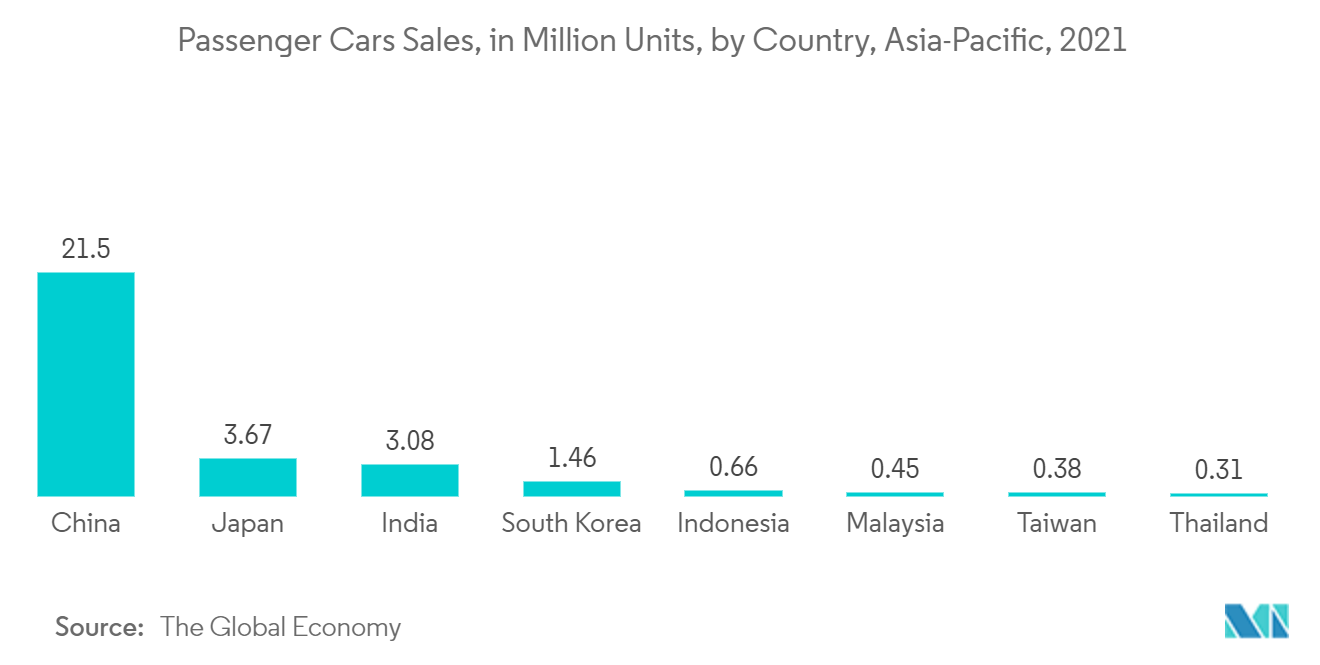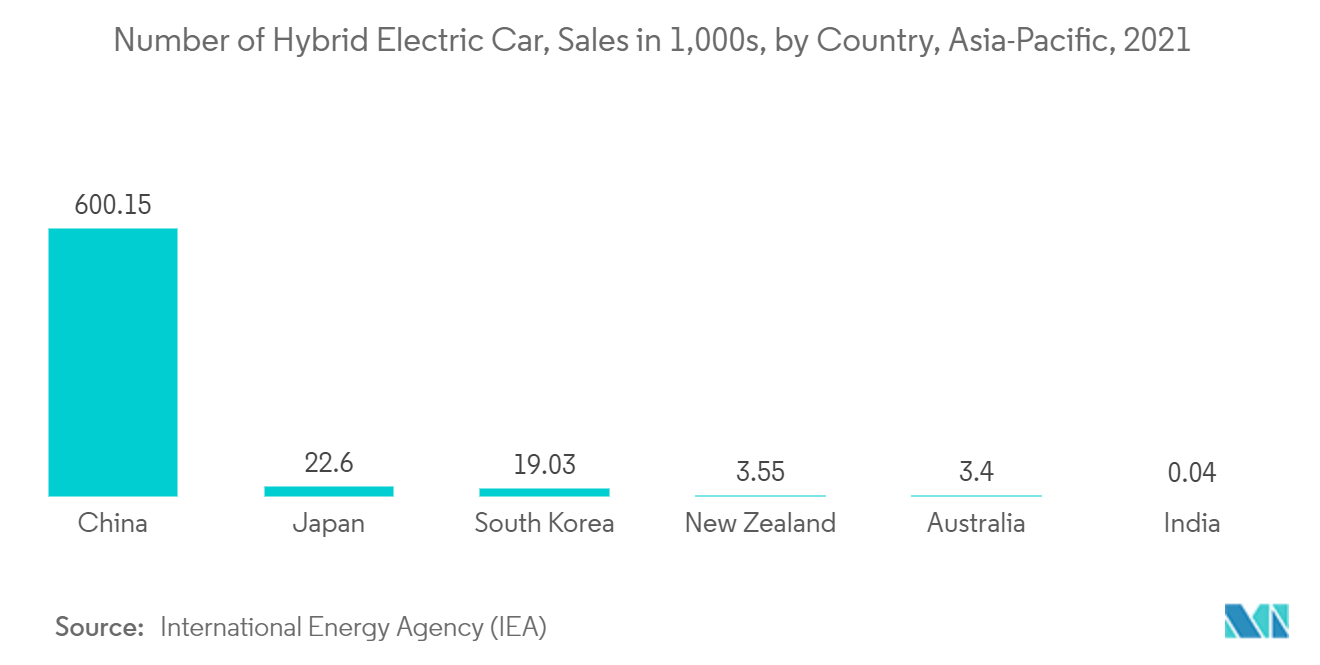Market Trends of Asia-Pacific Electric Vehicle (EV) Fluids Industry
Hybrid Electric Vehicles to Dominate the Market
- A hybrid electric vehicle is a type of vehicle that combines a conventional internal combustion engine system with an electric propulsion system. In the Asia-Pacific region, a survey conducted by Zebra Technologies revealed that more than half of the consumers (53% globally, 60% in APAC) indicate their future preference is for hybrid electric vehicles.
- The demand for hybrid vehicles is rising due to stringent emission regulation standards and the growing demand for low- or zero-emission vehicles. In 2022, the global sales of electric cars increased by around 60% and surpassed 10 million for the first time. Electric vehicle (EV) sales increased in every region of the world as production increased, oil prices rose, and targeted policies were formed that supported the market.
- In Asia-Pacific, India was catching up in electric vehicle sales, with 3,29,190 units sold in 2021, a 168% increase over the 1,22,607 units sold in the previous year. The passenger EV sales in India tripled in 2021 to 14,800 units and are still showing signs of growth.
- The government of India has undertaken multiple initiatives to promote the manufacturing and adoption of electric vehicles in India to reduce emissions in accordance with international conventions and develop e-mobility in the wake of rapid urbanization.
- For instance, the National Electric Mobility Mission Plan (NEMMP) and Faster Adoption and Manufacturing of Hybrid & Electric Vehicles in India (FAME I and II) helped create the initial interest and exposure for electric mobility. For instance, in phase two of FAME, the government announced an outlay of USD 1.4 billion through 2022. This phase focuses on the electrification of public and shared transportation through subsidizing 7,090 e-buses, 500,000 electric three-wheelers, 550,000 electric passenger vehicles, and 1,000,000 electric two-wheelers.
- Thailand is also slowly emerging as a hub for EVs and hybrid vehicles. In 2022, the hybrid EV sales volume in Thailand reached almost 42,000, the highest among other types of EVs. According to the Federation of Thai Industries (FTI), in 2023, Thailand's EV market will continue to gain momentum, with sales expected to reach between 25,000 and 35,000 units.
- The sales of hybrid electric passenger vehicles in India are expected to more than double to reach the 100,000-unit mark for the first time in 2023, with demand set to get a boost from new models being planned for launch by automakers such as Tata Motors, MG Motor India, and Mahindra & Mahindra.
- In 2021, approximately one percent of all the passenger cars sold in Japan were hybrid electric vehicles, an increase of 0.36% compared to the previous year. The Government of Japan has announced that by 2035, all new passenger cars sold domestically should be electrified, creating expectations for the growth of electric vehicles in Japan.
- All the aforementioned factors contribute to the growth of hybrid electric vehicles, which further drives the market for electric vehicle (EV) fluids over the forecast period.

China to Dominate the Market
- China is expected to dominate the market for electric vehicle fluids in the Asia-Pacific region due to increasing sales of electric vehicles in the country and rising investments in plant establishments by the major players operating in the market.
- In 2021, the total sales of electric vehicles in China reached 3.3 million units, up from 1.3 million compared with the figures of the previous year. By 2025, the government of China aims for 20% of all vehicle sales to be electric, including embracing NEVs as the next generation of government vehicles.
- Many large electric vehicle manufacturers are investing in the establishment of plants for the production of electric vehicles in the country. For instance, in February 2022, Tesla built a second electric vehicle (EV) facility in China to help it keep up with increasing demand both locally and in export markets. The company increased its capacity in China to at least 1 million cars per year.
- In January 2022, Honda, in partnership with Dongfeng Motor, announced plans to build a second assembly plant for all-electric vehicles in China. The manufacturing at the plant is expected to begin in 2024, with an initial annual capacity of 120,000 vehicles.
- Globally, China has witnessed the largest share in passenger car sales. The growing disposable income of consumers and changing lifestyles are increasing the demand for passenger cars in China. In 2022, China's passenger electric vehicle sales almost doubled and accounted for one in every four cars sold in the country.
- Therefore, all the aforementioned factors are expected to boost the demand for electric vehicle (EV) fluids in the coming years.

